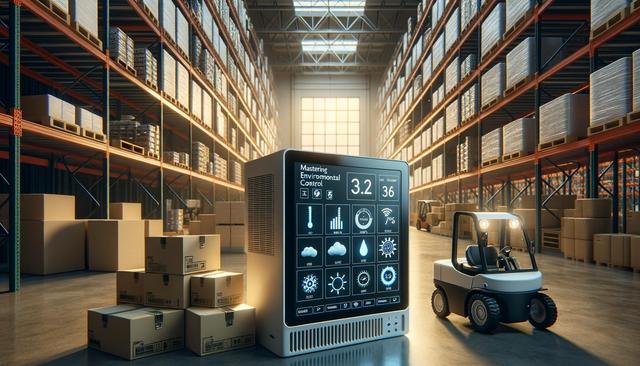
Mastering Environmental Control: The Role of Temperature and Humidity Monitoring in Warehouses
The Importance of Environmental Consistency
In warehouses, maintaining a stable environment is essential for preserving the integrity of stored goods. Temperature fluctuations and humidity spikes can lead to degradation, especially for sensitive products like pharmaceuticals, electronics, and food items. These conditions can compromise product safety, shelf life, and performance. For example, excess humidity may result in mold growth or condensation, while high temperatures can accelerate chemical breakdown or spoilage.
Implementing reliable temperature and humidity monitoring systems helps mitigate these risks by ensuring that storage conditions remain within specified limits. Such consistency not only protects inventory but also reinforces customer trust and brand credibility. Moreover, consistent environmental control supports more predictable operational outcomes, reducing the likelihood of delays or losses due to compromised goods.
Technology Behind Monitoring Systems
Modern warehouses rely on advanced monitoring systems to track environmental variables in real time. These systems typically include sensors, data loggers, and cloud-based dashboards that provide visibility and alerts when conditions deviate from set thresholds. The integration of Internet of Things (IoT) technology enhances these capabilities by enabling remote access and automated adjustments.
Key components of an effective monitoring system include:
- Temperature sensors placed at critical points within the warehouse
- Humidity sensors that detect moisture levels in the air
- Automated alerts for deviations from acceptable ranges
- Data logging for historical analysis and audits
These tools not only provide real-time insights but also support predictive maintenance and strategic planning. With the right setup, warehouse operators can identify patterns, optimize HVAC operations, and reduce energy use while maintaining a suitable storage environment.
Compliance and Industry Standards
Regulatory compliance is a major driver for implementing environmental monitoring in warehouses. Industries such as pharmaceuticals, food distribution, and electronics are subject to strict guidelines regarding storage conditions. Failing to meet these standards can result in penalties, product recalls, or loss of certification.
Organizations must adhere to frameworks like Good Distribution Practice (GDP) or Hazard Analysis and Critical Control Points (HACCP), which emphasize the importance of monitoring and documentation. Proper temperature and humidity tracking allows warehouses to:
- Demonstrate compliance during inspections
- Maintain traceability of environmental data
- Ensure product safety and efficacy
- Support quality assurance programs
By integrating monitoring systems into their standard operating procedures, warehouses can maintain a state of readiness and ensure that they meet both internal quality goals and external regulatory requirements.
Cost Efficiency and Waste Reduction
Beyond quality control, environmental monitoring contributes significantly to cost efficiency. Spoiled or damaged goods due to poor storage conditions lead to direct financial losses and increased waste. Monitoring systems help prevent such outcomes by enabling proactive interventions.
Additional financial benefits include:
- Lower insurance premiums due to reduced risk
- Fewer product returns and customer complaints
- Optimized energy usage through better HVAC management
- Reduced labor costs related to manual checks and inspections
Furthermore, minimizing waste aligns with sustainability goals, which are increasingly important to stakeholders and customers alike. By integrating environmental controls, warehouses can enhance operational efficiency while supporting broader environmental responsibility initiatives.
Implementation Considerations
When selecting and installing temperature and humidity monitoring systems, several factors should be considered to ensure effectiveness. These include the layout and size of the warehouse, the types of goods stored, and the existing infrastructure. Multiple sensor placements may be necessary to account for temperature gradients and airflow variations.
Key steps in implementation include:
- Conducting an environmental assessment of the facility
- Choosing equipment that meets industry-specific requirements
- Training staff on system usage and response protocols
- Establishing regular calibration and maintenance schedules
It’s also crucial to plan for data storage and analysis. Cloud-based platforms offer scalable solutions for managing large volumes of data and ensure that records are accessible for compliance audits or performance reviews. With thoughtful planning, warehouses can seamlessly integrate monitoring systems into their operations and maintain optimal environmental control over the long term.
Conclusion
For warehouse managers and operators, mastering environmental control through temperature and humidity monitoring is more than a quality measure—it’s a strategic necessity. It supports product integrity, customer satisfaction, regulatory compliance, and operational efficiency. By investing in reliable monitoring systems and embedding them into warehouse operations, businesses can safeguard their inventory, reduce losses, and contribute to sustainable practices in the supply chain.


